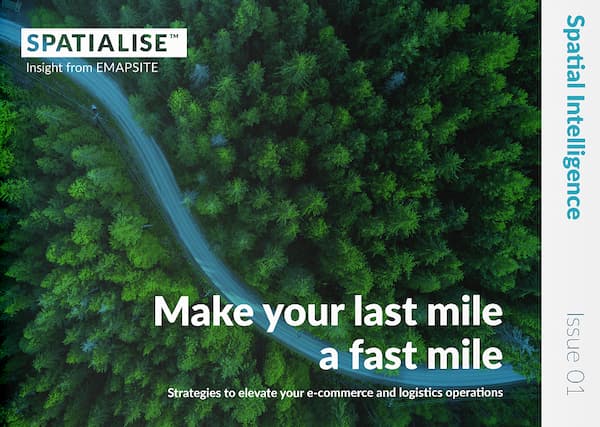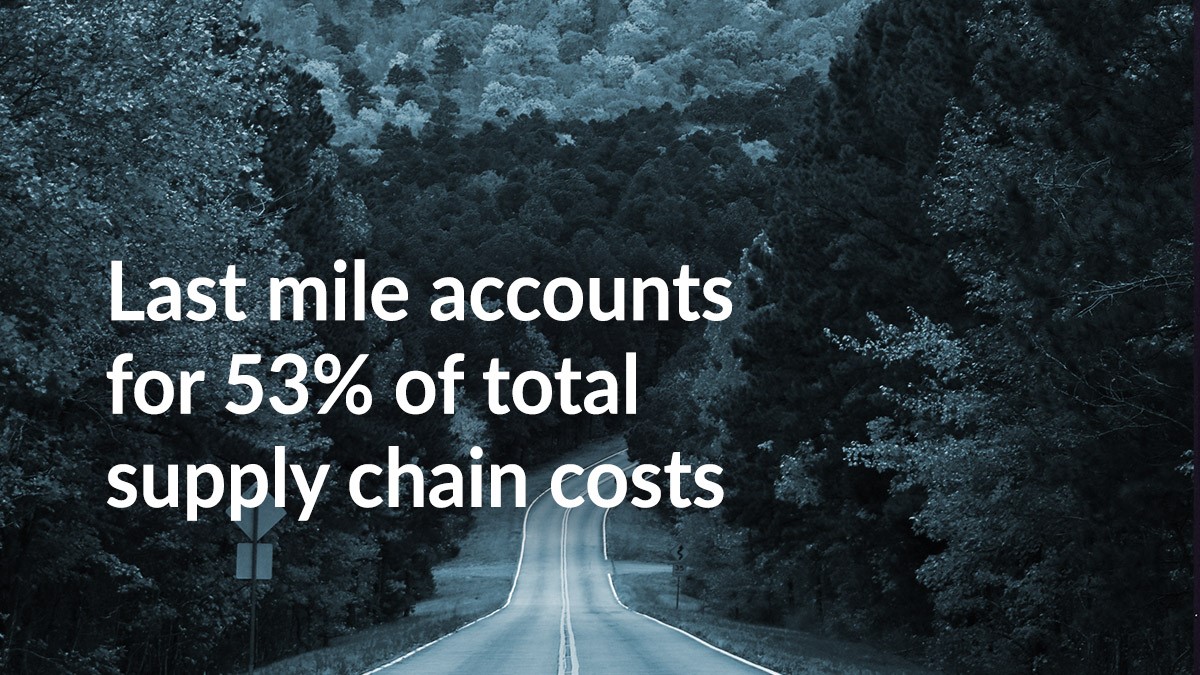Last Mile to Fast Mile
Top 7 supply chain strategies for last mile delivery
In e-commerce and logistics, the final stage of customer delivery – the last mile – can be the most inefficient, expensive and challenging. But it needn’t be that way. Here, we examine the intricacies of reaching the ultimate delivery point at speed, and consider proven strategies for success.
Last mile challenges: an overview
As one of the UK’s fastest growing sectors, logistics is now worth over £688 billion per year and, following the pandemic, the industry has also seen a 60% year-on-year growth rate. Society’s habits changed dramatically amidst the height of Covid-19 – it’s been reported that close to 150 million people shopped online for the first time.
Today, it’s clear that this shift has had a lasting impact on consumer behaviour, and has forced businesses to develop and embrace new technologies and supply chain models in order to meet the high demand. Yet it’s that last mile which is the most difficult to navigate and therefore the most inefficient – accounting for approximately 53% of the total supply chain costs. The primary challenge? Pinpointing the customer’s exact location.
In rural areas, postcodes can be imprecise and delivery points can be several miles apart, while in urban areas traffic can impact the driver’s delivery speed. To compound these issues, addresses can be complicated; they are constantly being updated to keep up with changing postcodes and new property developments, which makes it even tougher for delivery companies to stay up-to-date if they don’t have the right data.
In addition, consumer demand has also never been more, well, demanding. Speedy delivery, free postage, flexibility and real-time tracking aren’t just a bonus but are almost expected of e-commerce suppliers. Customers want to be updated when their orders have been received, processed, shipped and be sent a delivery confirmation – or be informed if their order has been delayed or delivery slot changed. And same or next-day deliveries are also seen as commonplace.
Here's our seven-point guide to delivering the best possible last mile results.
If you’d like to transform your last mile into a fast mile, get in touch with one of the Spatialise team via our website. And if you’d like a more in depth exploration of last mile solutions, check out our free whitepaper


- Consider your business capabilities
Does your business have the time and resources to interpret complex data AND deliver a high-quality and high-speed last mile?
There’s an affordable pre-packaged solution out there to help your logistics operation run more smoothly. Addressible from Spatialise, part of Emapsite, takes the postal address file from Royal Mail and combines that with data from Ordnance Survey, which allows it to plot locations with pinpoint accuracy. It connects to latitude and longitude but more crucially UPRN and UDPRN, which enables your logistics trucks to attach a point to every deliverable location in Great Britain.
- Streamline your processes
Collect data and information on your in-transit products. This way, you can both detect potential flaws (to resolve them) and provide your customers with up-to-date information on where their package is and when it will be at their door. By having a streamlined process, this will improve your logistics efficiency while also upholding the transparency that consumers demand.
A better last mile + increased customer satisfaction = win/win.
- Make smarter investments
While there are other services and products out there for locating addresses, they will often be cost prohibitive at scale. Addressible from Spatialise provides address data at a reasonable cost. It’s designed for those who need high volume in mind and the team behind it are always available to help should you require it.
- Use auto-dispatch tech
Dispatching drivers and assigning deliveries is incredibly time-consuming to undertake manually. Auto-dispatch technology, however, automatically coordinates the movement of goods and drivers for you. Using machine learning to crunch large datasets, the software makes smarter, optimised decisions about vehicle and driver deployment.
- Make the most of your address solution
As an e-commerce or logistics operator, you may have already purchased an address software product, or you may be using one that you created yourself. But what about the address data inside? It’s possible that you’re working from incomplete records or very expensive data.
Addressible from Spatialise takes the relevant information from Royal Mail and combines this with positional data from Ordnance Survey to get you to the right delivery point affordably.
- Address lookup is crucial
When delivering in large postcode areas in rural settings it’s essential to know not only the delivery point reference but also the property reference. This level of specificity is key as a postcode isn’t always accurate and can cover a vast distance. Addressible from Spatialise links both OS’s UPRN and Royal Mail’s UDPRN providing a highly specific address location. This point on the map is also crucial for finding named properties (as opposed to numbered properties) with ease.
- Validate your addresses
If you’re delivering a high volume and/or precious cargo, it’s worth having a validated address to be sure your route is efficient and to be confident that you’re delivering the valuables to the correct location. Addressible provides this service with trusted data from OS and Royal Mail in an easy-to-integrate package.
Latest News

Future-proofing Assets Against Flooding in Britain
A recent investigation by The Guardian has revealed a sobering reality: millions more properties across Britain are now at risk of flooding as climate change intensifies. This makes it more crucial than ever to act - and to ensure those actions are guided by reliable, high-quality data.
Read Full Article-
Why address data is the unsung hero in the UK’s new-build recovery
Read Full Article -
Decoding the OS National Geographic Database: A Game-Changer for Utilities
Read Full Article
